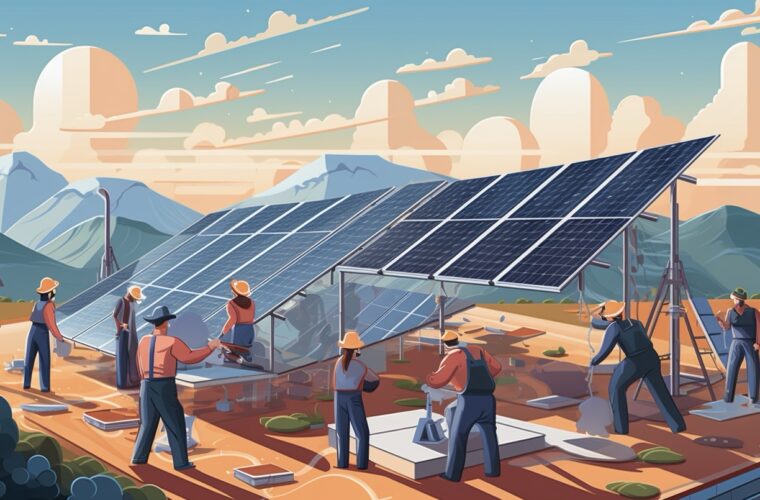A set of things that show whether is solar energy renewable ?
The Fundamentals of Solar Energy
Solar energy is a renewable source of power that has gained significant attention in recent years as the world seeks to transition away from fossil fuels and towards more sustainable energy solutions. The sun, a vast and inexhaustible source of energy, provides the foundation for solar power, making it an inherently renewable resource.

The Solar Energy Cycle
At the core of solar energy’s renewable nature is the continuous cycle of energy production from the sun. The sun, a massive nuclear fusion reactor, constantly generates and emits energy in the form of electromagnetic radiation, including visible light, infrared, and ultraviolet rays. This energy is then captured by solar energy systems, such as photovoltaic (PV) cells or solar thermal collectors, and converted into usable forms of electricity or heat.
The Renewable Advantage
Unlike fossil fuels, which are finite and non-renewable resources that require extraction and combustion, solar energy is constantly replenished by the sun’s continuous energy output. As long as the sun continues to shine, solar energy will remain a renewable resource that can be harnessed for human use without depleting the source.
The Sustainability of Solar Energy

The renewable nature of solar energy is closely tied to its sustainability, as it aligns with the principles of environmental protection and long-term resource management.
Environmental Benefits
Solar energy is a clean, emissions-free form of energy production, making it a highly sustainable option compared to fossil fuels. The use of solar energy does not release greenhouse gases or other pollutants into the atmosphere, contributing to the reduction of the environmental impact associated with traditional energy sources.
Infinite Resource
The sun’s energy output is essentially infinite on a human timescale, with the sun expected to continue burning for billions of years. This ensures that solar energy will remain a viable and abundant resource for generations to come, making it a truly sustainable energy solution.
Long-term Viability

Solar energy systems have a relatively long lifespan, with many PV panels and solar thermal collectors capable of operating for 20 to 30 years or more. This longevity, combined with the sun’s renewable nature, contributes to the long-term viability of solar energy as a sustainable energy source.
The Future of Solar Energy
As the world continues to grapple with the challenges of climate change and the need for clean, renewable energy sources, solar energy is poised to play an increasingly crucial role in the global energy landscape.
Technological Advancements

Ongoing research and development in solar energy technology have led to significant improvements in the efficiency, cost-effectiveness, and accessibility of solar power. As these advancements continue, the adoption of solar energy is expected to accelerate, further solidifying its status as a renewable and sustainable energy solution.
Regulatory and Policy Incentives
Governments around the world have implemented various policies and incentives to encourage the adoption of solar energy, such as tax credits, feed-in tariffs, and renewable energy mandates. These measures help to drive the growth of the solar energy industry and make it more accessible to both individuals and businesses.
Societal Shift
There is a growing societal awareness and demand for renewable energy sources like solar power, driven by concerns about climate change and the desire for a more sustainable future. This shift in public opinion and consumer behavior is expected to continue driving the expansion of the solar energy sector in the years to come.
Integration with Energy Storage

The combination of solar energy with advanced energy storage technologies, such as batteries and thermal storage systems, can further enhance the sustainability and reliability of solar power. By storing excess solar energy, these systems can provide a consistent and dispatchable source of renewable electricity, even when the sun is not shining.
Grid Integration and System Resilience
As the penetration of solar energy increases, grid operators and policymakers are working to integrate solar power seamlessly into the existing energy infrastructure. This involves addressing challenges related to grid stability, load balancing, and the integration of distributed solar generation. Successful integration can lead to a more resilient and sustainable energy system.
In conclusion, solar energy is an inherently renewable resource that is both sustainable and environmentally friendly. With its abundant supply, long-term viability, and the ongoing advancements in technology and policy support, solar energy is poised to play a crucial role in the global transition to a more sustainable energy future.



